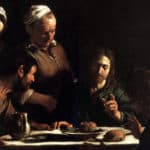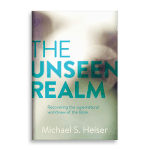
The content of our faith should be true and good but also beautiful. The Gospel ought to inspire a response of awe in God?s beauty and the glory of His redemptive story. But what does this mean for humanity being created in God?s image? If we are God?s image, do we reflect His beauty? And if so, how and when are we most beautiful? This post will draw from Jonathan King?s The Beauty of the Lord to answer these questions.
Image and Beauty
What does it mean that we are created in God?s image? King suggests three ?principal aspects of the imago Dei whose features reflect the glory of God in humans? (p. 113).
The Official Aspect
God created humanity to be kings and priests and in these ways ?image God in office? (p. 114). Humans are to image God as kings through ruling over creation, representing him as sons, and filling the earth with other image-bearers (Gen 1:26-28). As priests, humans are to ?transform the earth into a sacred place? and ?mediate divine blessing throughout all the earth? (p. 118).
The Constitutional Aspect
The body is not simply the ?host? for God?s image, but God?s image is constituted in the whole person, body and soul. This is reflected in the fact that the eschatological image of God is the resurrected Christ (Phil 3:20-21; Col 3:4).
The Ethical-Relational Aspect
Bearing God?s image is also relational and moral/ethical in nature. Since the Trinitarian God is ?the pattern of all aspects of image bearing? then humans image God through relationship. This includes our engenderedness. Both genders?together?image God. What?s more, our image bearing is ethical (e.g. Eph 4:24; Col 3:10) as only humans are held morally accountable to how we image our Creator.
As humanity bears God?s image, we possess a beauty that is ?inherent in and expressed through the form that [our] image-bearing takes? (P105-106).
Image and Glory
If all are in God?s image, do we all reflect God?s glory with equal success? An answer is found in distinguishing between image and glory. All humans bear the divine image, and as such, we reflect something of the glory of God (e.g. Ps 8:5). However, glory and image are not the same. Though our ?reflection of God?s glory can vary in degree, it does not seem to support the notion that the image of God proper in humans is itself something that varies in degree? (p. 111). In other words, humanity?s image-bearing nature was not affected by the Fall but our reflection of God?s glory does vary.
Beauty Vitiated and Redeemed
Post-fall humanity rejected the glory of God and replaced it with the glory of a false image (Rom 1:21-23) and as such lack the glory of God (Rom 3:23). However, nothing indicates that the image of God in humans has been lost, marred, or destroyed (Gen 9:6; Jas 3:9). Moreover, believers are conformed into the image of Christ ?from one degree of glory to another? (2 Cor 3:18; Rom 8:29). The image does not change, but the degree of glory does.
While all humans are image bearers and equal in dignity, our beauty is ?expressed by reflecting most fittingly the ways that humans were created to bear all aspects of the divine image? (106). This can be mapped to the narrative of redemptive history. Adam and Eve?s original glory as image-bearers is vitiated for humans in the post-fall context. However, those redeemed in Christ are ?recreated in the image of Christ and transformed in the glory of the Spirit? and in the new creation will possess a ?consummation image-berating glory? (p. 112).
In the eternal state we will most faithfully reflect God?s glory as image bearers and as such will attain consummative beauty.
This post is adapted from chapter 3 in The Beauty of the Lord: Theology as Aesthetics by Jonathan King (Lexham Press, 2018).






